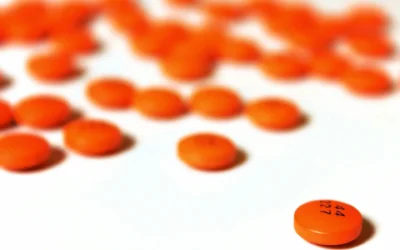Coarctation of the aorta (CoA) is a congenital heart defect characterized by a narrowing of the aorta, the primary artery that supplies oxygen-rich blood from the heart to the rest of the body. This narrowing results in restricted blood flow, making the heart work harder than normal and leading to potential health complications.
Overview
The aorta is a major blood vessel responsible for distributing oxygenated blood to the circulatory system. Coarctation in this vessel usually occurs in a section called the descending aorta, just after the blood vessel branches off to supply the upper body. As a congenital condition, it is present at birth and is one of the most common cardiac anomalies diagnosed in infants and children.
Symptoms
In infants, symptoms of Coarctation of the Aorta may include:
- Difficulty feeding
- Heavy or rapid breathing
- Increased irritability
- Pale skin or a greyish hue
In older children and adults, due to the body’s adaptability, symptoms may not manifest until later in life or could be less pronounced. They can include:
- High blood pressure
- Nosebleeds
- Leg cramps or cold feet
- Shortness of breath or chest pain, especially during exercise
- Headaches or migraines
Causes
The exact cause of Coarctation of the Aorta remains unclear, though it’s believed to develop during fetal growth. Factors which may contribute include:
- Genetic conditions, like Turner syndrome.
- Prenatal exposure to certain environmental factors or drugs.
- It might also be linked to other left-sided heart defects.
Risk Factors
Several factors increase the risk of a child developing CoA:
- Family history: A family history of heart defects can play a role.
- Bicuspid aortic valve: This condition, where the aortic valve has two leaflets instead of three, often occurs with CoA.
- Specific genetic conditions, such as Turner syndrome.
- Prenatal exposure to alcohol or certain medications.
How to Avoid It
While not always preventable, certain measures can help reduce the risk of congenital heart defects:
- Adhering to a healthy lifestyle during pregnancy, including balanced nutrition.
- Avoiding smoking or alcohol during pregnancy.
- Steering clear of certain medications while pregnant, unless approved by a doctor.
- Regular prenatal check-ups to detect anomalies early.
When to See the Doctor
Early diagnosis of Coarctation of the Aorta can lead to better outcomes. If you notice any of the symptoms mentioned or if your child shows signs of distress, it’s vital to seek medical attention. High blood pressure in the arms or a significant discrepancy between arm and leg blood pressure can be an indicator. Regular check-ups during infancy and childhood can help in early diagnosis and management.
Helpful Information
- Diagnosis: Beyond physical examination and checking blood pressures, doctors might employ echocardiograms, MRI, CT scans, or chest X-rays for a more definitive diagnosis.
- Treatment: Intervention depends on the age of the patient and the severity of the condition. Options range from balloon angioplasty, stent placement, to surgery for more severe cases.
- Complications: If left untreated, CoA can lead to complications like heart failure, ruptured aorta, endocarditis, or hypertension.
- Post-treatment Care: Post-surgical or intervention care is crucial. Regular monitoring, medication to control blood pressure, and a healthy lifestyle are key components of successful management.
- Support: Joining support groups or connecting with other families who have experienced CoA can be beneficial. They provide emotional backing and a platform to share experiences and advice.
Historical Context
Coarctation of the aorta was first described in the 18th century, but it wasn’t until the 20th century that surgical treatments were developed. Dr. Clarence Crafoord is credited with the first successful surgical repair of aortic coarctation in 1944.
Incidence and Prevalence
It’s estimated that Coarctation of the Aorta affects approximately 1 in every 2,500 births in the U.S. This condition constitutes 5-8% of all congenital heart defects.
Associated Cardiac Anomalies
In many cases, coarctation of the aorta doesn’t occur in isolation. It’s commonly associated with other cardiac anomalies such as:
- Ventricular septal defect
- Patent ductus arteriosus
- Mitral valve abnormalities
Long-Term Outlook
Patients who’ve had CoA repair, even if successfully treated during childhood, need lifelong follow-up because complications can arise in adulthood. These might include:
- Persistent or recurrent hypertension
- Re-narrowing of the aorta (re-coarctation)
- Aneurysm formation at the site of the repair
- Premature coronary artery disease
- Stroke due to cerebral aneurysms or hemorrhage
Impact on Physical Activity
People with a history of Coarctation of the Aorta are advised to discuss their physical activity and exercise regimens with their cardiologist. Some patients may be advised to avoid strenuous or competitive sports, depending on their individual health and history of repair.
Psychosocial Impact
The psychosocial impact of a congenital heart defect, like Coarctation of the Aorta, can’t be understated. Some individuals may experience anxiety or depression related to their medical history, potential complications, and concerns about the future. Counseling and support groups can be beneficial in these cases.
Pregnancy Considerations
Women with a history of CoA, especially those who have undergone surgical or interventional repair, should seek pre-pregnancy counseling and be cared for by a cardiologist specializing in adult congenital heart disease during their pregnancy. Pregnancy can place added stress on the heart and circulatory system, and there’s an increased risk of hypertension and aortic rupture in these women.
Research and Advances
The field of cardiology is constantly evolving. Recent advancements include minimally invasive endovascular treatments and improvements in stent design for the treatment of Coarctation of the Aorta. Genetic research is also ongoing to determine the underlying causes and potential genetic markers of CoA.
Diet and Lifestyle
While specific dietary guidelines may not be established for Coarctation of the Aorta, individuals with this condition (especially post-repair) are often advised to maintain a heart-healthy diet, which can help manage blood pressure and reduce the risk of other cardiovascular complications. This includes a diet low in saturated fats, cholesterol, and salt.
In conclusion, Coarctation of the Aorta is a complex congenital heart defect with implications that span from infancy to adulthood. The diagnosis, while challenging, offers an opportunity for medical professionals to intervene early, providing individuals with a chance at a normal life. However, understanding the breadth and depth of this condition is essential for patients, caregivers, and medical professionals alike to ensure optimal care and outcomes.









